6 easy moves to prevent back pain
A physical therapist shares her best exercises for avoiding injury.
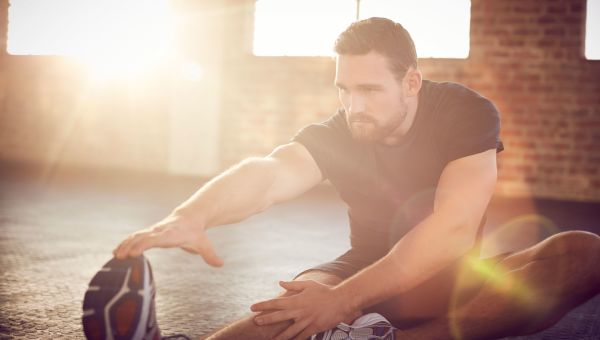
Back pain affects millions of Americans each year. It's one of the most common medical problems and a top cause of missed work days. Anyone can develop back pain, but smoking, obesity, family history, and certain jobs all increase your risk.
There is one thing that can lower your odds—exercise. Study after study shows that exercise helps prevent back injury by strengthening key muscles and improving flexibility. Especially helpful are those that work your core—the muscles in your midsection that support your whole body.
The following exercises are great for preventing back pain, says Kimberly Waters a physical therapist in Charleston, South Carolina. You can start them at any age and they can be done at home with little or no equipment. But take note—before starting any new exercise routine, you should consult a healthcare professional to be sure it is safe to do so.
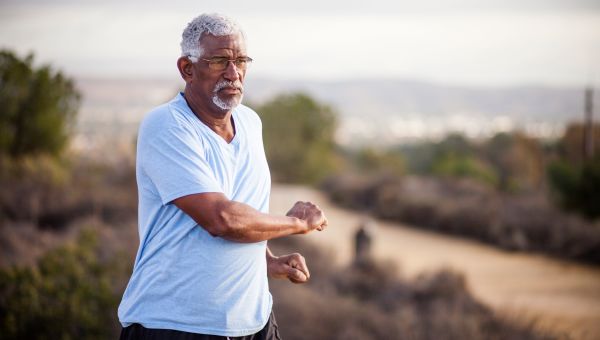
Getting started
One of the most important things to remember when you first attempt these exercises: "Start slow," says Waters. "Just try doing 10 of something, especially if it's hard, and then work up to three sets of 10." Opt for slower, controlled movements and concentrate on your form. "Never sacrifice quality for quantity," she adds.
If you're not used to exercising, you may experience aches and pains when you first begin—but be assured, some reasonable soreness is normal. "It will peak at 24 to 72 hours and then gradually subside," says Waters. "If you continue with exercising you won’t be as sore as you were that first time; you’ll experience that 'good sore' feeling."
Of course, if that soreness progresses to increased or radiating pain, stop what you're doing, she adds. And if it persists, call your doctor. These exercises should help, not hurt.
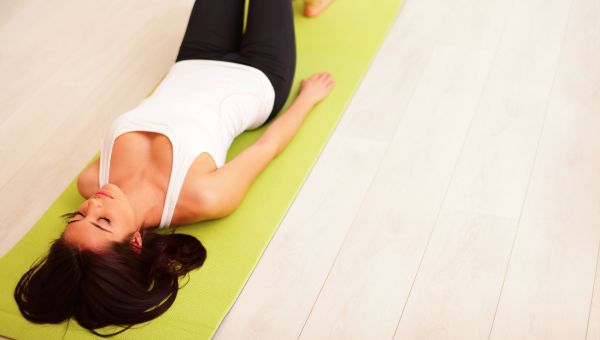
Pelvic Tilts
Who doesn't love an exercise you can do lying down? Pelvic tilts strengthen your abdominal muscles and your buttocks—and they may be the easiest fitness move you've ever tried.
"Start by lying on your back with your knees bent," says Waters. Make sure to keep your feet flat on the floor, "then flatten your low back out by drawing in your belly button." Hold each pose for five seconds and relax slowly. Simple, right?
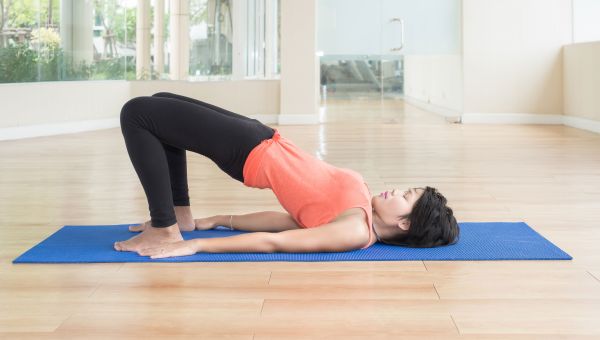
Bridges
Bridges start the same way as pelvic tilts. The difference is using your heels to push your bottom off the floor, keeping it elevated for a few seconds—Waters suggests at least five. Don't go too high; you'll overextend your back muscles. After the time is up, relax and place your bottom on the floor again.
Bridges will strengthen your abs and your gluteal muscles, also known as the muscles that make up your butt.
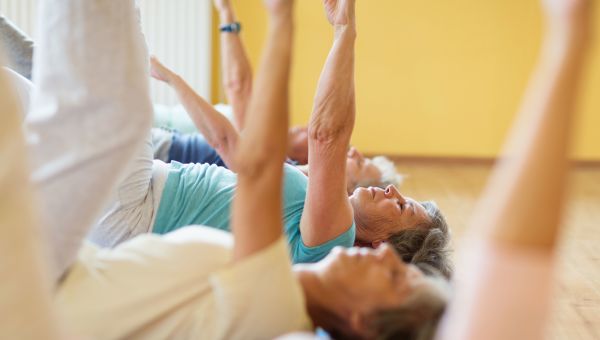
Dying Bugs
If you can imagine a beetle flipped onto its back, you have a pretty good idea of what the dying bug looks like. Start by doing a pelvic tilt, bringing your lower back to the floor. "Holding that pelvic tilt, march your feet and swing your arms," says Waters. "When you lift your left foot you will want to raise your right arm and vice versa."
She suggests you try 10 on each side while maintaining your pelvic tilt. And if you lose the tilt? "Stop, reset and continue."
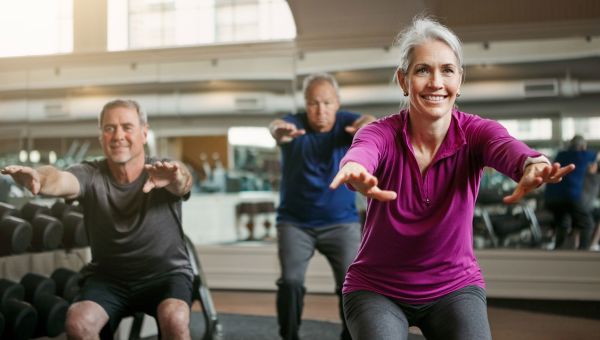
Mini-Squats
Instead of a full-on squat where your bottom dips nearly to the floor, try a modified version where your knees never go past a 90-degree angle. For best results, stand with your feet a little more than shoulder-width apart, engage (or flex) your core muscles as you move and don't let your knees move forward past your toes. If done correctly, you'll exercise your abs, hips, glutes, and legs.
"You can use the counter to hold on," says Waters. "As you get stronger you can go down further." But squatting past a 90-degree bend, she adds, could put unnecessary pressure on your knees.

Planks and Side Planks
Planks are used in spine conditioning programs to strengthen your back, core, and shoulders. Waters likes the classic front plank and the side plank.
To do the front plank, lie face-down on a mat. Using your hands and toes—and keeping your back straight—lift your body up, fully extending your arms. Keep it there for at least 10 seconds, and up to one minute, depending on how fit you are. "You can start on your knees and elbows first if it is tough," Waters says.
Side planks are similar, but a bit more difficult. You begin by lying on your side and lifting your body using one arm or hand. "If you start feeling pain/strain in your low back it is time to take a break," says Waters. You can also move from a classic plank into a side plank by leaning to the side onto your left hand, stacking your right foot on top of your left and reaching up with your right hand (or vice versa).
These exercises are good for your abdominal muscles as well as your oblique muscles, which are located next to your abs.
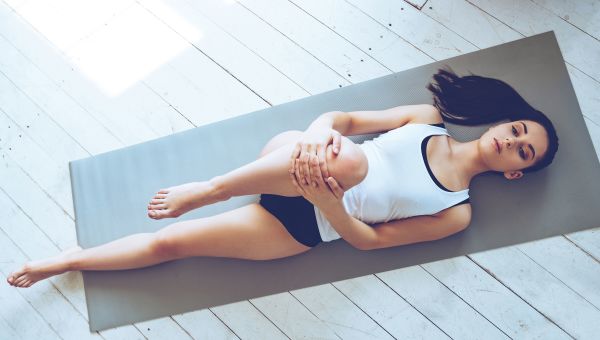
Stretches
There are few things better for maintaining flexibility and preventing back strains than stretching. "Your low back, hip flexors, hamstrings, and chest muscle groups get tight over time and as we age," says Waters. "It’s important to stretch these areas to maintain good alignment and muscle balance."
She suggests:
- Lying on your back, raising your knee to your chest (pictured), keeping it there for 30 to 60 seconds, and repeating the motion three times with each leg.
- Stretching out your hamstrings by sitting and reaching toward your toes. Make sure you keep your legs as straight as possible.
- A doorway stretch, in which you put both arms on the inside of either side of a doorframe—like you're making the sign for a touchdown—and then take a step through the doorway, stretching the muscles in your chest.
- Standing on one leg, bending the other behind you, and grabbing that ankle with your hand. This one's called a standing stork stretch or a quad stretch with hip extension.
"Stretches should be done most days of the week," she says. "Three times for at least a 30-second hold." The best time to do it, she adds, is about 20 minutes after you exercise, "but better to do it when you can than not at all."
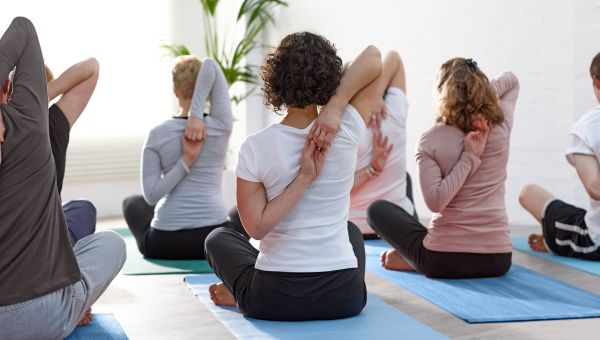
Moving Forward
If you're interested in expanding your repertoire of back exercises, check in with a physical therapist. They can help you correct your posture, introduce breathwork exercises and check for other issues that could be increasing your back pain, such as pelvic floor disorders.
You can also try classes or group lessons. Waters likes Pilates and yoga, both of which can strengthen back muscles and improve flexibility. "They even have chair yoga for older people or those who may be coming back from an injury," she notes. If you don’t feel comfortable attending a class, there are many streaming options, especially for beginners.

Serranheira F, Sousa-Uva M, Heranz F, Kovacs F, Sousa-Uva A. Low Back Pain (LBP), work and absenteeism. Work. 2020;65(2):463-469.
Yang H, Haldeman S, Lu ML, Baker D. Low Back Pain Prevalence and Related Workplace Psychosocial Risk Factors: A Study Using Data From the 2010 National Health Interview Survey. J Manipulative Physiol Ther. 2016;39(7):459-472.
Lee JS, Kang SJ. The effects of strength exercise and walking on lumbar function, pain level, and body composition in chronic back pain patients. J Exerc Rehabil. 2016;12(5):463-470. Published 2016 Oct 31.
Rahman Shiri, David Coggon, Kobra Falah-Hassani, Exercise for the Prevention of Low Back Pain: Systematic Review and Meta-Analysis of Controlled Trials, American Journal of Epidemiology, Volume 187, Issue 5, May 2018, Pages 1093–1101.
Anderson BE, Bliven KCH. The Use of Breathing Exercises in the Treatment of Chronic, Nonspecific Low Back Pain. J Sport Rehabil. 2017 Sep;26(5):452-458. doi: 10.1123/jsr.2015-0199. Epub 2016 Aug 24. PMID: 27632818.
Wieland LS, Skoetz N, Pilkington K, Vempati R, D'Adamo CR, Berman BM. Yoga treatment for chronic non‐specific low back pain. Cochrane Database of Systematic Reviews 2017, Issue 1. Art. No.: CD010671. Accessed 05 January 2021.
Hotfiel T, Freiwald J, Hoppe MW, et.al. Advances in Delayed-Onset Muscle Soreness (DOMS): Part I: Pathogenesis and Diagnostics. Sportverletz Sportschaden 2018; 32(04): 243-250.
National Institutes of Arthritis and Musculoskeletal and Skin Diseases. Back Pain. July 2019.
Ardalan Shariat, Joshua A. Cleland, Mahmoud Danaee, Mehdi Kargarfard, Bahram Sangelaji, Shamsul Bahri Mohd Tamrin. Effects of stretching exercise training and ergonomic modifications on musculoskeletal discomforts of office workers: a randomized controlled trial. Brazilian Journal of Physical Therapy. Volume 22, Issue 2, 2018, Pages 144-153.
Eliks M, Zgorzalewicz-Stachowiak M, Zeńczak-Praga KApplication of Pilates-based exercises in the treatment of chronic non-specific low back pain: state of the art Postgraduate Medical Journal 2019;95:41-45.
Patil NJ, Nagaratna R, Tekur P, Manohar PV, Bhargav H, Patil D. A Randomized Trial Comparing Effect of Yoga and Exercises on Quality of Life in among nursing population with Chronic Low Back Pain. Int J Yoga. 2018;11(3):208-214.
Physiopedia. Low Back Pain and Breathing Pattern Disorders. August 26, 2019.
Physiopedia. Low Back Pain and Pelvic Floor Disorders. December 3, 2020.
More On


video

article

slideshow


video


video
